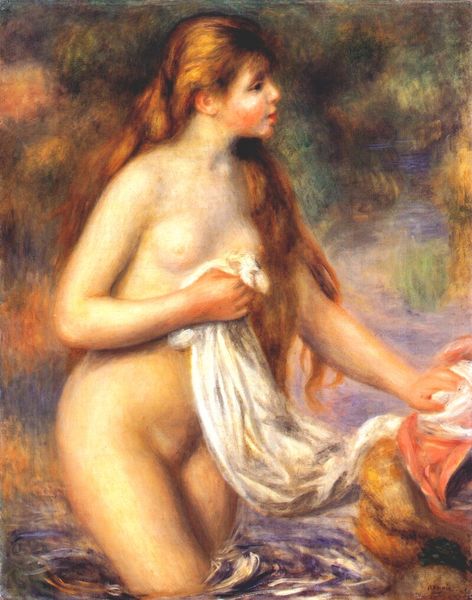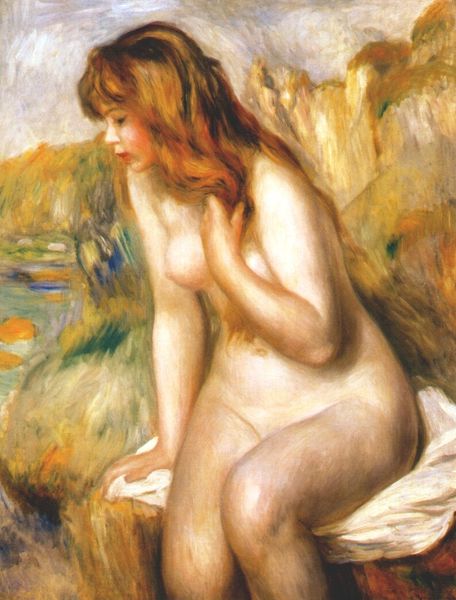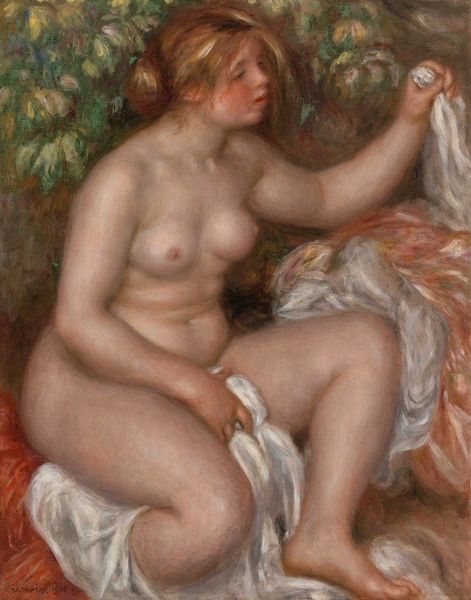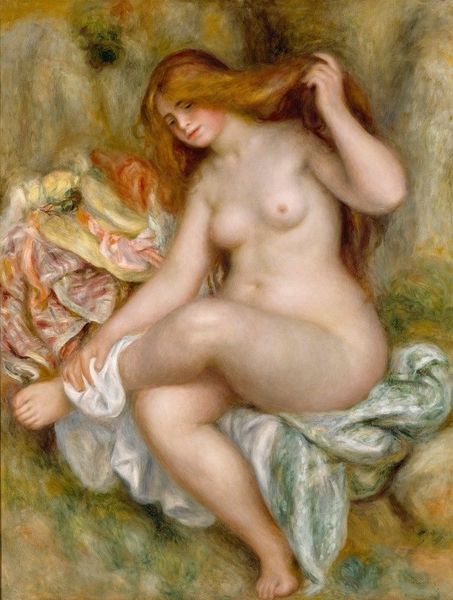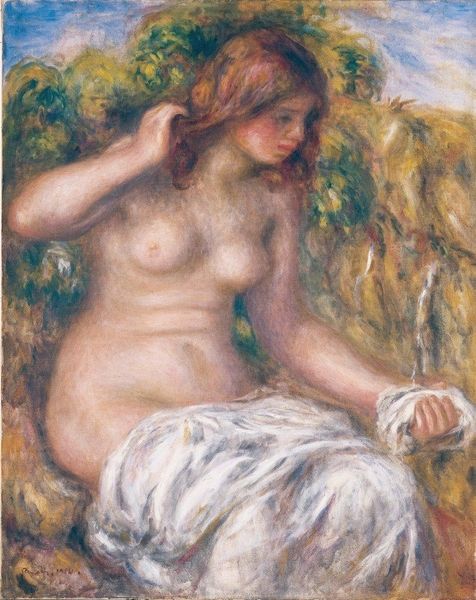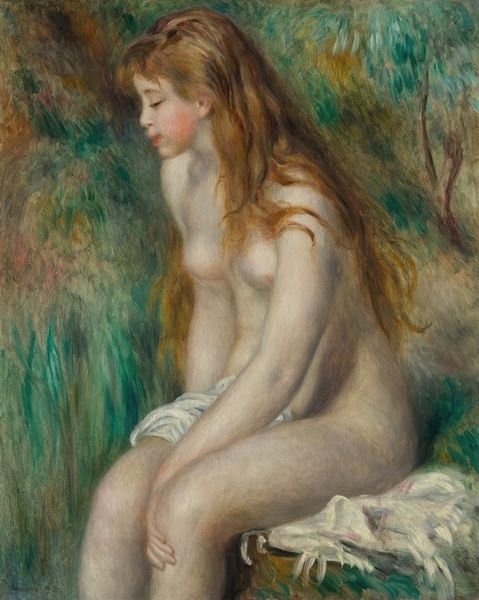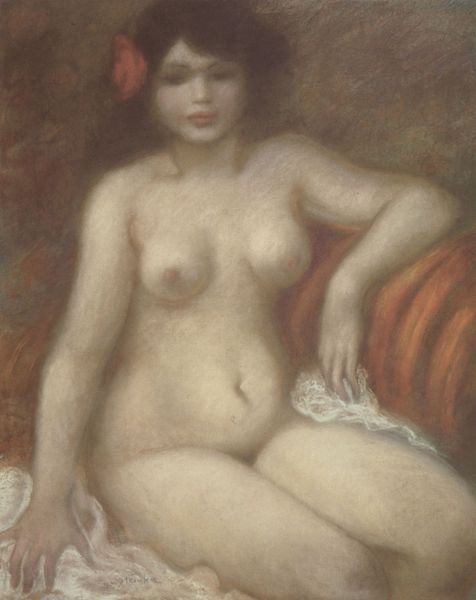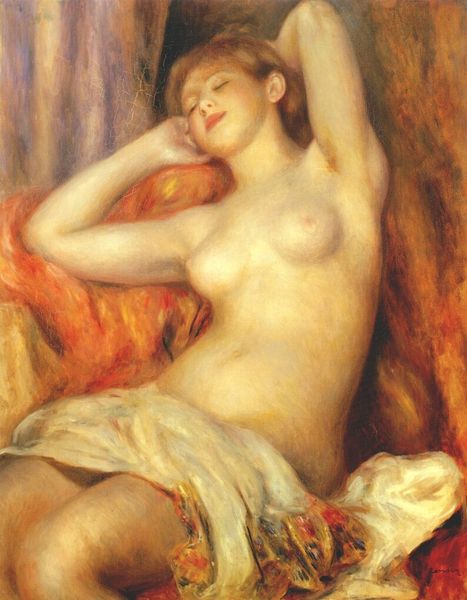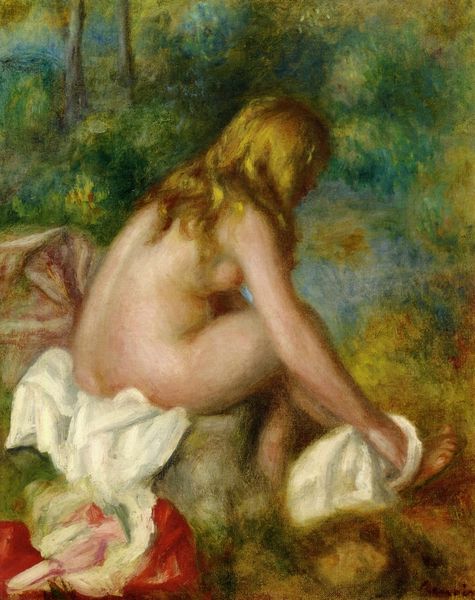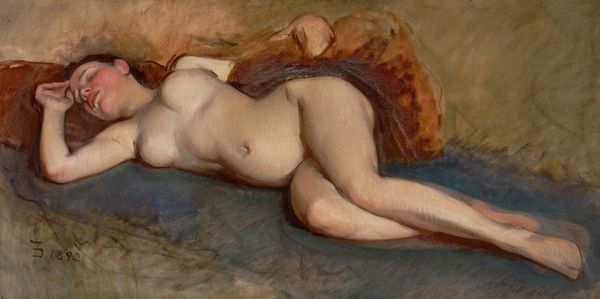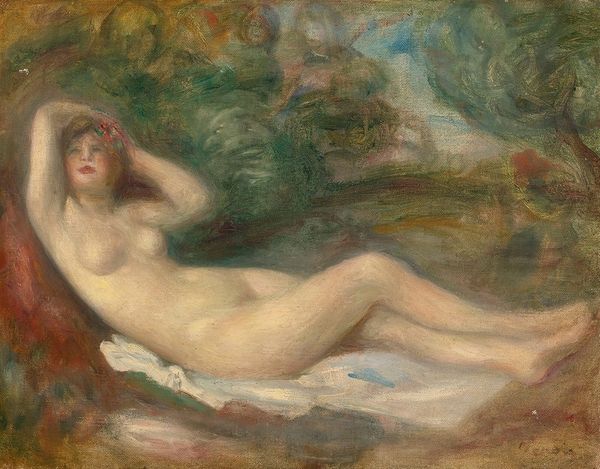
Dimensions: 92.08 x 73.03 cm
Copyright: Public domain
Curator: Pierre-Auguste Renoir painted this work, entitled "Large Bather with Crossed Legs," in 1904, employing oil on canvas. Editor: What immediately strikes me is the pervasive softness. It's more than just the gentle curves; even the light seems muted, diffused like through a morning mist. It is quite romantic in tonality. Curator: The bathers occupied Renoir for a long time. Throughout art history the female nude has been about objectification, so I wonder about how he manages to sidestep accusations of the male gaze, if indeed he does. Considering Renoir's era, discussions of sexuality, the body and art theory weren't quite where they are now. Editor: I see echoes of classical depictions of Venus, goddesses rising from the sea, or nymphs caught unaware in their ablutions. This composition has appeared for centuries. What’s particularly fascinating about Renoir's bather is how he fuses this classicism with impressionistic techniques. Notice the almost abstract rendering of the background, where brushstrokes of color evoke foliage without defining it explicitly. Curator: He walks a tightrope here, aesthetically and conceptually. There’s that languid pose, of course, the classic recumbent nude. But in a late 19th, early 20th century context, she feels modern but deliberately devoid of narrative. The crossed legs are a clue; she isn't seducing the viewer so much as inhabiting her private moment. Her gaze is introverted and contemplative. Editor: It does conjure this feeling of reverie. Hair, in mythology and psychoanalysis, often symbolizes vitality and raw power, a sense confirmed by the abundance of the figure’s luxuriant tresses here. Curator: Agreed. By turning away from the prevailing academic styles toward loose brushwork and modern female figures, Renoir sought to reflect the changing paradigms of his time. Editor: It all coalesces, as something that transcends its era and embodies both an enduring visual language and modern interpretation. Curator: Absolutely. It speaks volumes about beauty, representation, and cultural context, still. Editor: Precisely, it is art which keeps engaging in this eternal, cyclical dialog, and the way this manifests in symbolic language.
Comments
No comments
Be the first to comment and join the conversation on the ultimate creative platform.

